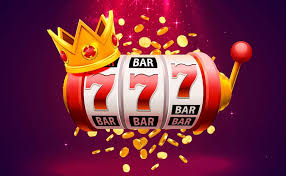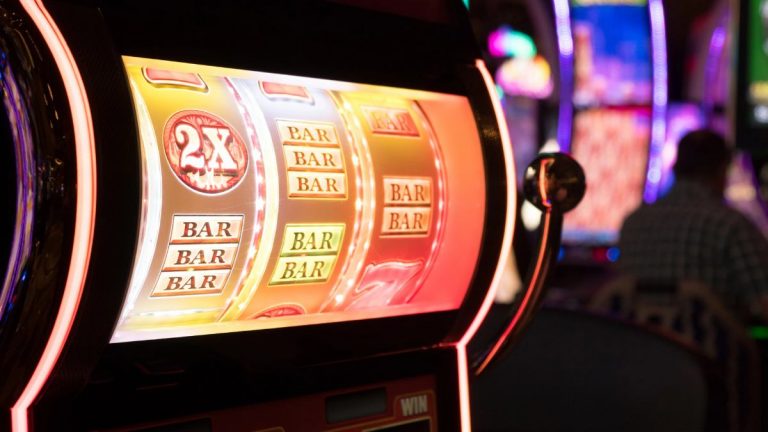RTP Slot vs Volatility: What’s More Important?
Picture two casino games sitting side by side on our floor: both promise identical theoretical returns, yet one delivers steady trickles of modest wins while the other unleashes dramatic swings between devastating losses and life-changing jackpots. This fundamental difference illustrates why understanding the relationship between Return to Player percentages and variance represents the cornerstone of intelligent rtp slots selection. While marketing materials often emphasize flashy graphics and bonus features, seasoned players recognize that these mathematical foundations determine whether a gaming session aligns with personal preferences and bankroll limitations. Learn effective Slot strategy to maximize your RTP potential.
What is RTP in slots? RTP stands for Return to Player, which indicates the percentage of wagered money that slot machines will pay back to players over extended play periods.
Comparing RTP Across Different Variances
Understanding how identical return percentages can produce vastly different gaming experiences requires examining the mathematical relationship between theoretical returns and payout distribution patterns. When we analyze games across our casino floor, we observe that two titles sharing identical rtp slot percentages can deliver completely different player experiences based on their underlying variance structures. This phenomenon occurs because theoretical return calculations represent long-term averages across millions of spins, while variance determines how those returns distribute across individual sessions.
Slot machine RTP typically ranges from 88% to 98%, with higher percentages offering better long-term value for players.
Same RTP, Different Variance — Examples
Our casino showcases numerous examples where identical theoretical returns produce dramatically different playing experiences through varying distribution patterns. Consider two popular titles on our floor: both feature 96.5% return percentages, yet one delivers frequent small wins through multiple paylines and low-volatility mechanics, while the other reserves most payouts for bonus rounds and high-value symbol combinations. These design differences create distinct risk profiles that appeal to different player preferences and bankroll management strategies.
How Variance Affects Short-Term Results
Short-term gaming sessions reveal the most dramatic differences between variance levels, as mathematical expectations require extensive play periods to manifest consistently. During typical casino visits lasting two to four hours, players encounter variance effects far more significantly than theoretical return advantages. High-variance titles can produce sessions with zero meaningful wins followed by others featuring multiple bonus activations and substantial payouts, while low-variance alternatives maintain steadier payout frequencies with reduced amplitude swings.
Understanding what does volatility mean in slots is crucial for players, as it describes the risk level and payout frequency of slot games.
Why Two Slots with Same RTP Can Feel Different
The psychological impact of payout distribution patterns explains why identical theoretical returns can produce vastly different emotional responses and perceived value. Games featuring frequent small wins create positive reinforcement cycles that maintain player engagement through regular dopamine releases, even when overall session results trend negative. Conversely, high-variance alternatives can feel “cold” or unresponsive during standard play periods, despite offering identical long-term expectations and potentially superior short-term winning opportunities.
When Volatility Outweighs RTP
Certain gaming scenarios and player profiles benefit more from favorable variance characteristics than superior theoretical return percentages, particularly when session objectives prioritize specific outcomes over long-term mathematical advantages. Tournament situations exemplify this principle, where players require significant wins within limited timeframes to advance or secure prizes. Similarly, players with substantial bankrolls seeking transformative winning opportunities often find high-variance options more appealing despite potentially lower rtp slots percentages.
When Variance Matters More Than RTP
Specific playing scenarios consistently demonstrate situations where slots volatility characteristics outweigh theoretical return advantages in determining optimal game selection. Progressive jackpot environments exemplify this principle, as players often accept reduced base game returns in exchange for life-changing winning possibilities that standard games cannot provide. The mathematical trade-off between consistent smaller returns and transformative jackpots represents a conscious decision to prioritize variance over steady theoretical advantages.
Slot machine volatility determines whether a game offers frequent small wins or infrequent large payouts, helping players choose games that match their risk tolerance.
High-Variance Games for Big Win Potential
High-variance titles across our casino floor feature specific design elements that concentrate payouts into significant winning events rather than distributing returns through frequent smaller awards. These games typically incorporate progressive jackpots, bonus rounds with substantial multipliers, and symbol combinations that produce outsized payouts when they align successfully. The mathematical structure behind these titles creates opportunities for transformative wins while accepting extended periods with minimal payout activity.
Popular high-variance selections feature the following characteristics that appeal to players seeking substantial winning opportunities:
- Progressive jackpot systems with accumulating prize pools
- Bonus rounds offering multipliers exceeding 100x base bet amounts
- Free spin features with expanding wilds and retriggering mechanisms
- Symbol combinations producing payouts exceeding 1,000x stake amounts
- Hold and win mechanics that can fill entire reels with premium symbols
Low-Variance Games for Consistent Small Wins
Low-variance alternatives prioritize frequent payout events that maintain player engagement through regular positive reinforcement, making these titles ideal for extended entertainment sessions and conservative bankroll management approaches. These games feature numerous paylines, frequent wild appearances, and bonus mechanisms designed to activate regularly rather than producing occasional large rewards. The mathematical distribution favors consistency over dramatic winning events, appealing to players who prioritize session duration and steady gameplay over transformative winning opportunities.
Matching Variance to Your Playstyle
Successful game selection requires honest assessment of personal preferences, risk tolerance, and session objectives to identify variance levels that complement individual playing styles. Players seeking extended entertainment periods with minimal bankroll fluctuations benefit from low-variance selections that provide consistent activity and frequent small wins. Conversely, those willing to accept extended quiet periods in pursuit of significant winning opportunities find high-variance alternatives more aligned with their objectives and risk acceptance levels.
Effective variance matching also considers practical factors including available playing time, bankroll size, and emotional responses to winning and losing streaks. Players with limited time periods may prefer high-variance options that can produce meaningful results quickly, while those with extended availability often gravitate toward low-variance titles that maximize entertainment duration. Understanding these personal factors enables more strategic game selection that enhances overall satisfaction and gaming value.
Match Variance to Session Length
Session duration planning significantly influences optimal variance selection, as different time periods favor distinct mathematical approaches to payout distribution. Brief gaming sessions lasting thirty minutes or less often benefit from high-variance selections that can produce significant results within limited timeframes, despite accepting increased risk of minimal winning activity. Extended sessions spanning several hours typically favor low-variance alternatives that maintain consistent entertainment value through regular payout events and sustained gameplay activity.
Choosing Volatility Based on Bankroll
Bankroll size directly influences appropriate slots volatility selection, as different variance levels require distinct capital management approaches to navigate successfully without premature session termination. Players with substantial bankrolls can absorb the extended losing streaks characteristic of high-variance titles while maintaining sufficient capital to reach rewarding payout cycles. Limited bankrolls often necessitate low-variance selections that preserve playing capital through frequent small wins and reduced amplitude swings.
Mathematical analysis reveals specific bankroll multiples that support different variance approaches effectively:
- High-variance games typically require 200-400 times the base bet amount for adequate session coverage
- Medium-variance alternatives function effectively with 100-200 times base bet bankroll allocation
- Low-variance selections can provide extended entertainment with 50-100 times base bet amounts
- Progressive jackpot games may require even larger multiples due to reduced base game returns
Adjusting Bets According to Expected Swings
Bet sizing strategy must account for anticipated slots volatility levels to maintain appropriate session length and risk exposure throughout gameplay periods. High-variance titles require conservative bet sizing to weather potential losing streaks while preserving sufficient capital for bonus round participation and extended play periods. Low-variance alternatives can accommodate more aggressive bet sizing due to frequent small wins that help maintain bankroll stability through regular positive reinforcement.
Common Misconceptions
Widespread misunderstandings about mathematical relationships between return percentages and variance patterns frequently lead to suboptimal game selection and unrealistic expectations about short-term results. Many players incorrectly assume that higher rtp slot automatically provide superior playing experiences, overlooking how variance distribution affects actual session outcomes and entertainment value. These misconceptions often result in disappointment when theoretical advantages fail to manifest during typical gaming periods.
Misconceptions About Variance & RTP
Several persistent myths continue circulating among casino patrons regarding the relationship between theoretical returns and variance patterns, often leading to poor strategic decisions and unrealistic session expectations. The most common misconception suggests that rtp slot with higher return percentages automatically provide better winning opportunities, overlooking how payout distribution affects short-term results and entertainment value. This misunderstanding causes players to prioritize theoretical advantages that may require millions of spins to manifest consistently.
Another widespread myth claims that variance patterns can be predicted or influenced through betting strategies, timing, or specific playing techniques. Mathematical reality demonstrates that both theoretical returns and variance characteristics represent fixed game parameters determined by underlying algorithms, unaffected by player actions beyond game selection and bet sizing decisions. These persistent beliefs often lead to frustration when expected manipulation techniques fail to produce anticipated results.
Separating Myth from Math in Slot Design
Modern rtp slots machine design incorporates sophisticated mathematical models that balance player entertainment with casino profitability through carefully calibrated return and variance parameters. Contrary to popular belief, these systems operate on predetermined algorithms that cannot be influenced by player behavior, betting patterns, or timing strategies. The mathematical foundations ensure random outcomes while maintaining statistical consistency over extended periods, regardless of individual player actions or superstitious practices.
How Misunderstanding Variance Can Affect Strategy
Incorrect assumptions about variance patterns frequently result in inappropriate bankroll management and unrealistic expectations that diminish gaming enjoyment and session satisfaction. Players who misunderstand high-variance characteristics often experience frustration during extended quiet periods, leading to increased bet sizing or game switching that can accelerate bankroll depletion. Similarly, those who underestimate low-variance entertainment value may abandon games prematurely while seeking more dramatic winning opportunities.
Strategic errors stemming from variance misconceptions include pursuing inappropriate games for available bankrolls, maintaining unrealistic expectations about short-term results, and implementing ineffective betting systems based on false assumptions about mathematical relationships. These mistakes often compound over time, creating negative gaming experiences that could be avoided through accurate understanding of slot volatility principles and realistic session planning approaches. Play thrilling Megaways slots with top RTP values.
Understanding the intricate relationship between theoretical returns and variance patterns empowers players to make informed decisions that enhance their gaming experiences while maintaining realistic expectations about probable outcomes. Our casino remains committed to providing educational resources that help patrons navigate these mathematical concepts effectively, ensuring that every gaming session delivers maximum entertainment value aligned with individual preferences and risk tolerance levels.









